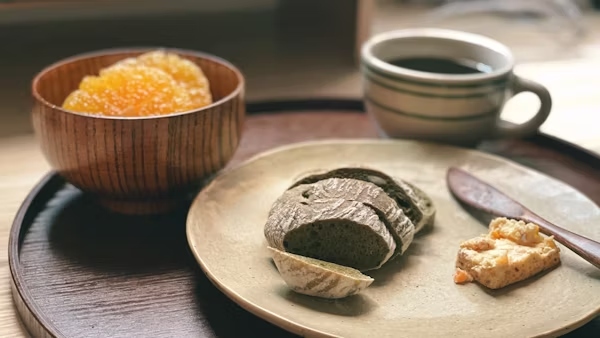BLOG
Masago: The Tiny Roe with a Global Story of Flavor, Nutrition, and Culinary Innovation

Masago, the delicate roe from the capelin fish, has become a celebrated ingredient in global cuisine, particularly within Japanese culinary traditions. In the first 100 words, here’s the essence: Masago refers to the tiny, orange eggs harvested from small, cold-water fish, most commonly in the North Atlantic and Arctic oceans. Known for their subtle crunch, mild saltiness, and slightly sweet undertone, they are widely used as sushi toppings, garnishes, and flavor enhancers. This ingredient offers not only aesthetic appeal but also notable nutritional value, being rich in protein, omega-3 fatty acids, and certain essential vitamins. Understanding masago’s journey—from fishing waters to your plate—offers both cultural and gastronomic appreciation.
Historical and Cultural Roots of Masago
The roots of masago trace back to fishing communities in Iceland, Norway, and Canada, where capelin harvests were integral to local economies. While capelin meat was consumed or used in fishmeal, its roe—masago—was prized for both domestic cooking and export markets. The adoption of masago into Japanese cuisine likely began in the mid-20th century, as global trade expanded and sushi chefs sought alternatives to pricier tobiko. Its affordability and adaptability made it an attractive option for restaurants seeking high-quality garnish without inflating menu prices.
Culturally, masago has come to symbolize culinary fusion. In Japan, it’s linked to traditional nigiri and gunkan sushi, while in the West, it appears in fusion rolls, poke bowls, and even as a topping for deviled eggs. The vibrant orange hue not only enhances a dish’s appearance but also carries symbolic meaning in Japanese aesthetics, often representing celebration and prosperity. In many high-end dining settings, chefs even dye masago black, red, or green using natural colorants like squid ink or wasabi to match thematic presentations.
- Origins: Primarily Iceland, Norway, Canada
- Culinary adoption: Japan mid-20th century
- Cultural symbolism: Prosperity, celebration, artistry
- Common variants: Naturally orange, dyed black, red, green
Nutritional Composition and Health Considerations
Masago’s nutritional profile makes it more than just a decorative element. It is a lean source of protein, essential for muscle maintenance and tissue repair. Its omega-3 fatty acids contribute to cardiovascular health, while vitamins such as B12 support energy metabolism and nerve function. Minerals like selenium, phosphorus, and magnesium also feature prominently in its composition.
However, it is worth noting that masago’s sodium content can be significant, as the roe is often cured with salt during processing. For individuals monitoring their salt intake, moderation is advised. Additionally, those with fish or seafood allergies should avoid masago entirely. Pregnant individuals are sometimes advised to limit consumption of raw fish products, so cooked applications may be preferable in such cases.
Table 1: Nutritional Snapshot of Masago (Per 1 Tablespoon)
| Nutrient | Amount | Key Benefit |
|---|---|---|
| Calories | ~40 kcal | Low-calorie flavor enhancement |
| Protein | 3-4 g | Supports muscle health |
| Fat | 2-3 g | Contains heart-healthy omega-3s |
| Omega-3 Fatty Acids | 200-300 mg | Reduces inflammation, supports brain |
| Vitamin B12 | ~2 mcg | Boosts energy and nerve function |
| Sodium | ~240 mg | Flavor, but monitor intake |
| Selenium | 12-15 mcg | Antioxidant properties |
“Think of masago as a garnish that nourishes,” says dietitian Laura Kim. “It’s proof that beauty on the plate can coexist with genuine health benefits.”
Masago in Culinary Applications
In sushi, masago is typically sprinkled atop rolls for texture and color. Its subtle brininess enhances seafood flavors without overwhelming them. In poke bowls, it’s often paired with avocado, tuna, or salmon to create contrast in texture and taste. Outside of Japanese and Hawaiian dishes, chefs incorporate masago into mayonnaise-based dips, pasta sauces, and even savory pancakes.
Its ability to hold color and shape makes it an ideal candidate for plating artistry. By mixing masago with wasabi paste, chefs can create a spicy topping for sashimi. When blended into butter, it forms a seafood spread perfect for bread or grilled vegetables. “Masago plays the role of both seasoning and spectacle,” remarks chef Daniel Ortega, whose fusion restaurant in Los Angeles is known for masago-topped truffle fries.
- Sushi rolls: California roll, dragon roll, rainbow roll
- Poke bowls: Paired with fresh fish and vegetables
- Creative fusion: Masago butter, masago deviled eggs, seafood pasta
- Color play: Black masago for dramatic effect
Table 2: Culinary Uses of Masago Across Cuisines
| Dish Type | Example Dish | Culinary Role |
|---|---|---|
| Traditional | Nigiri sushi | Garnish, flavor accent |
| Hawaiian | Salmon poke bowl | Texture, visual contrast |
| Western fusion | Masago deviled eggs | Unique garnish, flavor twist |
| Fine dining | Masago-infused butter | Rich, seafood seasoning |
| Street food | Masago-topped fries | Novelty, umami boost |
Harvesting, Processing, and Sustainability
Masago is harvested during the short capelin spawning season, typically in late spring or early summer. Fishermen target female capelin laden with roe, which is carefully extracted to preserve the eggs’ integrity. After collection, the roe is washed, salted, and sometimes dyed. The processing is designed to maintain both the color and delicate texture, as the eggs can be easily damaged.
Sustainability concerns arise when fishing pressures exceed natural replenishment rates. The Marine Stewardship Council (MSC) certifies certain capelin fisheries that follow sustainable practices, including catch limits and ecosystem-based management. Choosing masago from certified sources helps ensure long-term availability without damaging marine biodiversity.
Regional Variations and Flavor Profiles
While the basic essence of masago remains constant—tiny, orange roe with a briny, mild sweetness—its flavor and presentation vary across regions. In Japan, the preference leans toward pure, lightly salted masago, allowing the subtle marine notes to shine without overpowering the dish. Scandinavian countries, closer to the source fisheries, sometimes prepare masago with smoked flavors, reflecting their broader culinary traditions of preserving seafood. In North America, particularly in fusion-oriented restaurants, masago may be flavored with yuzu, wasabi, or chili oil to create new dimensions of taste. Chefs in Hawaii often mix masago with mayonnaise for poke bowl toppings, giving diners a creamy yet crunchy experience. These variations illustrate how masago adapts seamlessly to different culinary identities while retaining its core qualities. As chef Laura Saito once said, “Masago’s strength is its ability to belong everywhere without losing its own identity.”
Masago vs. Tobiko vs. Ikura: Understanding Roe Differences
Many diners encounter masago alongside tobiko and ikura in sushi restaurants, but these roes differ in origin, size, and taste. Masago comes from capelin, is smaller in size, and offers a softer crunch compared to tobiko, which is flying fish roe with larger, more robust eggs and a slightly sweeter, more pronounced briny flavor. Ikura, salmon roe, is dramatically larger—each egg a glistening orange orb bursting with liquid—and far more intense in flavor. While tobiko often commands a higher price, masago’s cost-effectiveness makes it popular for bulk garnishing without sacrificing visual or taste appeal. Ikura, on the other hand, is typically served in smaller quantities due to its richness. Understanding these differences allows diners and home cooks to select the right roe for their intended flavor impact and presentation.
Key distinctions:
- Masago: Small, mild, versatile, affordable
- Tobiko: Larger, crunchier, sweeter
- Ikura: Large, juicy, rich, intense
Culinary Pairings: What Works Best with Masago
Masago’s mild saltiness and delicate crunch make it a natural companion for a wide variety of ingredients. It pairs exceptionally well with creamy textures, such as avocado or cream cheese, creating a balance between softness and crispness. Its briny undertones complement fresh seafood like tuna, salmon, and scallops, while also enhancing plant-based dishes such as cucumber rolls or seaweed salads. Chefs often use masago to finish dishes that lack visual contrast, as its vibrant orange hue instantly brightens the plate. Beyond Japanese cuisine, it can enrich Mediterranean-inspired seafood pasta or serve as a topping for oysters in fine dining settings.
Ideal pairings:
- Avocado in sushi rolls
- Seared scallops or shrimp
- Cold soba noodles with dipping sauce
- Seafood risotto
- Oysters with citrus vinaigrette
The Role of Masago in Modern Fusion Cuisine
Modern chefs are constantly reimagining masago’s role, transforming it from a sushi staple into a star ingredient in unexpected dishes. In Los Angeles, one restaurant serves truffle-masago fries, combining umami from the roe with earthy truffle oil. In New York, a seafood bar offers masago-stuffed ravioli, topped with lemon butter sauce. Masago-infused aioli appears in gourmet burgers, while brunch menus in cosmopolitan cities now feature scrambled eggs with masago and smoked salmon. Its adaptability stems from its ability to merge into both hot and cold dishes without losing texture or flavor. “Masago’s charm,” says chef Ricardo Velasquez, “is that it’s equally at home in tradition and in rebellion.” This duality keeps it relevant in an era where diners expect both authenticity and novelty on the same plate.
Buying and Selecting High-Quality Masago
Choosing high-quality masago requires attention to freshness, color, and texture. The roe should have a bright, uniform orange hue without dullness or discoloration. A mild, clean ocean scent indicates freshness, while any overly fishy odor suggests age. Texture should be firm yet delicate—eggs that are mushy or overly dry have likely been stored improperly. When buying frozen masago, ensure the packaging is airtight to prevent freezer burn. Reputable fish markets and specialty Asian grocery stores are often the best sources, though high-end online seafood retailers now ship masago directly to homes. Always check for labeling that indicates sustainable sourcing, such as Marine Stewardship Council (MSC) certification.
Buying tips:
- Look for vibrant, even coloring
- Avoid strong fishy odors
- Prefer certified sustainable sources
- Buy from trusted fishmongers or specialized stores
Storage, Thawing, and Shelf Life
Proper storage ensures masago maintains its texture and flavor. If fresh, it should be refrigerated immediately and consumed within 2–3 days. Frozen masago can be stored for up to six months without significant quality loss. Thawing should be gradual—place the sealed package in the refrigerator for several hours to avoid textural damage. Never thaw at room temperature, as this can encourage bacterial growth. Once thawed, masago should not be refrozen, as repeated freezing and thawing can compromise both safety and quality. For those using masago sparingly, consider dividing bulk packages into smaller portions before freezing. This makes it easier to thaw only what’s needed for a single dish, reducing waste.
Health Benefits and Potential Risks
Masago is nutrient-dense, offering protein, omega-3 fatty acids, and essential vitamins like B12, all in a low-calorie package. Omega-3s are known for supporting brain function, reducing inflammation, and promoting heart health. Its selenium content contributes antioxidant protection, while phosphorus supports bone strength. However, the curing process can make masago high in sodium, which may be a concern for individuals with hypertension. Additionally, those with fish allergies should avoid it entirely, and pregnant individuals should consult healthcare professionals before consuming raw or cured roe.
Health summary:
- Benefits: Heart health, brain function, muscle repair
- Risks: High sodium, potential allergens, pregnancy caution
- Moderation: 1–2 tablespoons per serving recommended for most diets
Sustainability and Ethical Considerations
The demand for masago has raised questions about capelin fishery sustainability. Overfishing can disrupt marine ecosystems, as capelin plays a crucial role in the food chain, serving as prey for larger fish, seabirds, and marine mammals. Some fisheries have adopted strict quotas, seasonal restrictions, and monitoring systems to protect populations. Choosing masago from certified sustainable fisheries helps ensure that culinary enjoyment does not come at the expense of environmental stability. Restaurants increasingly disclose sourcing information, allowing diners to make informed choices. As environmental advocate Mika Tanaka puts it, “Every grain of masago carries a responsibility to the ocean that gave it.”
Creative Recipes Featuring Masago
- Masago Avocado Toast – Spread mashed avocado on crusty bread, top with lemon juice, and sprinkle masago for crunch.
- Masago Sushi Bake – Layer sushi rice, imitation crab, spicy mayo, and masago; bake until golden for a casserole twist.
- Masago Carbonara – Replace pancetta with seared scallops, toss pasta in egg yolk sauce, and garnish with masago.
- Masago Omelette – Fold masago into eggs with chives for a seafood-inspired breakfast.
- Masago Crostini – Toast baguette slices, top with cream cheese and cucumber, finish with masago and dill.
Storage and Handling Tips
For optimal freshness, masago should be stored in the coldest part of the refrigerator and consumed within a few days once opened. Frozen masago can last for several months, though texture may slightly change upon thawing. Always keep it sealed to prevent absorption of odors from other foods.
Tips:
- Refrigerate immediately after purchase
- Freeze for extended storage
- Thaw slowly in the refrigerator, not at room temperature
- Avoid repeated thawing and refreezing
Modern Harvesting Technologies for Masago
In the past, capelin roe collection was largely manual, relying on small vessels and simple nets during the short spawning season. Today, technology has refined the process to increase efficiency while reducing environmental impact. Modern trawlers are equipped with sonar systems that detect dense schools of capelin without disturbing other marine species. Once caught, the female fish are processed almost immediately onboard, where roe is separated, washed, and cooled to preserve freshness. Some fisheries now employ “roe stripping” techniques, gently removing eggs without damaging them. Advanced cold-chain logistics ensure that masago reaches processing facilities at ideal temperatures, maintaining texture and flavor. Fisheries with sustainability certifications often limit trawling to specific areas and times to protect spawning grounds. “Our goal,” says Norwegian fishery manager Lars Eriksen, “is to ensure that every grain of masago is harvested with respect for the ocean.”
Preservation Science and Shelf-Life Innovation
Preserving masago’s delicate texture has long been a challenge. Early methods relied on heavy salting, which extended shelf life but altered flavor. Today’s preservation science uses a combination of light salting, controlled freezing, and vacuum sealing to lock in freshness without overwhelming the natural taste. Some processors also employ modified atmosphere packaging (MAP), which replaces oxygen with inert gases to slow spoilage. Freezing at ultra-low temperatures within hours of harvest prevents ice crystal formation, maintaining egg structure. In high-end markets, nitrogen flash-freezing is used to virtually eliminate textural degradation. These advancements mean that masago can now travel from the North Atlantic to Tokyo or Los Angeles with minimal quality loss, expanding its global reach. The result is a product that can be stored frozen for six months or more, yet still tastes as if it were harvested just days ago.
The Global Sustainability Debate
Masago’s rising popularity has triggered conversations about the ethics of sourcing. Capelin are considered a “forage fish,” meaning they are a key food source for cod, seabirds, and marine mammals. Removing too many from the ecosystem can create cascading effects. Iceland and Norway have implemented strict catch quotas based on annual population surveys, but some critics argue these quotas still lean toward economic gain over ecological caution. Environmental organizations push for even tighter restrictions and for chefs to prioritize certified sources. On the consumer side, awareness is growing—diners increasingly ask restaurants where their masago’s is sourced. “Traceability is becoming as important as taste,” notes Canadian marine biologist Fiona Leclerc. The sustainability debate underscores that culinary delight should not come at the cost of marine ecosystem health, and that balancing enjoyment with responsibility is key to masago’s future.
Chef Perspectives: Masago in the Kitchen
To understand masago’s culinary impact, it helps to hear from those who work with it daily. Chef Haruto Nishida of Tokyo describes masago’s as “a punctuation mark for sushi—subtle, but capable of changing meaning entirely.” In contrast, Los Angeles-based chef Ricardo Velasquez sees it as “a gateway ingredient that introduces diners to the world of roe without intimidating them.” Nordic chef Anja Larsen incorporates smoked masago into rye bread canapés, drawing on Scandinavian traditions. All agree on one thing: masago’s versatility is unmatched. It adapts to minimalist plating as easily as to complex fusion dishes. Whether it’s used as a simple garnish on nigiri or as the key ingredient in a masago cream sauce, chefs praise its ability to carry flavors, complement textures, and add visual allure without overwhelming other elements on the plate.
World Tour of Masago Adaptations
Masago’s journey from Arctic waters to international kitchens has resulted in fascinating adaptations:
- Japan: Traditional sushi rolls, gunkan maki, and chirashi bowls, often served pure or lightly seasoned.
- Iceland: Smoked masago served with flatbread and cultured dairy spreads.
- United States: Featured in sushi burritos, poke bowls, masago’s deviled eggs, and seafood pasta.
- Singapore: Used in masago mayonnaise for seafood sandwiches and as a topping for salted egg yolk fries.
- Australia: Incorporated into seafood pizzas alongside calamari and prawns.
This global reach shows masago’s ability to transcend cultural boundaries. In each location, it adapts to local palates while maintaining its textural charm and visual appeal. The result is a truly cosmopolitan ingredient that links fishing villages in the North Atlantic to bustling urban food markets across continents.
Masago in Fine Dining vs. Street Food
One of masago’s most intriguing qualities is its ability to thrive in vastly different culinary environments. In fine dining, it often appears as part of intricate tasting menus, paired with uni, caviar, or high-grade sashimi. The presentation might involve minimal seasoning, allowing its natural qualities to shine. In contrast, street food vendors and casual eateries use masago’s as a bold, colorful topping for fried snacks, loaded sushi rolls, or spicy seafood tacos. This duality speaks to its accessibility—both a gourmet luxury and an everyday indulgence. “Masago’s is proof that sophistication and simplicity can share the same ingredient,” says food critic Elena Morita. Whether nestled in porcelain or served on a paper tray, its appeal is universal.
Masago and Beverage Pairings
Pairing masago with the right beverage enhances its subtle flavors. In Japanese tradition, dry sake with clean mineral notes complements the roe’s briny character. Champagne or sparkling wine, with their acidity and bubbles, balance the richness of creamy dishes topped with masago. For beer lovers, crisp pilsners or light lagers work well with masago sushi rolls, while pale ales can stand up to spicier preparations like wasabi-infused masago. Non-alcoholic pairings include green tea for its cleansing effect or citrus-infused sparkling water to brighten the palate. Beverage pairing is often overlooked, yet it can elevate a masago dish from pleasant to memorable. The right drink accentuates the roe’s delicate crunch and ensures its nuanced flavor doesn’t get lost among bolder ingredients.
Expanding Masago’s Role in Home Cooking
Home cooks are increasingly experimenting with masago beyond traditional sushi. Grocery stores offering frozen or fresh masago have made it accessible for weeknight meals and special occasions alike. Simple applications include sprinkling it over scrambled eggs, folding it into cream cheese for bagels, or adding it to salads for an unexpected crunch. More adventurous cooks blend it into sauces for grilled fish or stir it into risotto near the end of cooking for a pop of color. Masago’s ready-to-use nature eliminates the need for lengthy preparation, making it ideal for home kitchens. With a little creativity, even everyday meals can be transformed into restaurant-quality experiences. As one home chef put it in a cooking forum, “A spoonful of masago is like a passport stamp—it takes your dish somewhere new instantly.”
The Future of Masago in Global Cuisine
Looking ahead, masago’s role in global cuisine is likely to expand as sustainability measures improve and chefs continue to innovate. Plant-based alternatives that mimic the texture and color of masago are emerging, appealing to vegan diners while relieving pressure on capelin populations. Advances in aquaculture may eventually allow controlled breeding of capelin for roe production, ensuring year-round availability without depleting wild stocks. Meanwhile, creative culinary minds will keep finding novel uses, from molecular gastronomy presentations to dessert pairings that challenge expectations. As the food industry evolves toward transparency and sustainability, masago will remain a symbol of how tradition and innovation can coexist. Its story is far from over—it’s still being written in kitchens, markets, and fisheries around the world.
Conclusion
Masago’s rise from a regional specialty to a global culinary darling speaks to its unique combination of flavor, texture, and versatility. From the fishing boats of the North Atlantic to the sushi bars of Tokyo and the creative kitchens of Los Angeles, this tiny roe carries with it a story of tradition, adaptation, and artistry. Its nutritional value adds depth to its appeal, while sustainable sourcing ensures its presence for generations to come.
BLOG
Slylar box: Redefining storage with modern design

Tired of the clutter invading your space? Do traditional storage solutions seem outdated and uninspiring? Discover the Slylar Box, a revolutionary solution with a modern design that not only organizes your belongings but also enhances the aesthetics of your home. This innovative storage solution combines functionality and style, making it a must-have accessory for those looking to improve their home and keep everything organized. Whether you live in the city or in the suburbs, the Slylar Box is here to transform the way you think about storage. Let’s find out what sets this product apart and why you might fall in love with it!
The Slylar Box is more than just a storage solution; it’s a unique object that perfectly combines aesthetics and practicality. Designed for a modern lifestyle, its clean lines and versatile colors integrate seamlessly with any decor style. You won’t have to sacrifice aesthetics for functionality.
Made from high-quality materials, the Slylar Box promises durability and organization. Its innovative design makes it easy to stack and access, simplifying clutter management. Its thoughtful features meet a variety of needs, whether storing everyday items or seasonal decorations.
User reviews highlight not only its visual appeal but also the way it transforms spaces into serene environments. Customers appreciate the cozy, stylish ambiance it brings to their homes.
Summary
Storage solutions have evolved considerably over the years. Gone are the bulky, unsightly boxes that cluttered our spaces. Today, we look for items that combine functionality and aesthetics.
Discover the Slylar Box: a revolution in modern storage. Its clean lines and contemporary appeal make it an exceptional choice for both home and office use. This innovative product not only helps you organize but also enhances your decor.
Whether you’re looking to store seasonal items or simply organize your space, the Slylar Box will meet your needs without sacrificing style. Discover how this exceptional box can transform the way you manage storage and organization.
Skylar Box: Redefining Storage with Modern Design
The Slylar Box is revolutionizing the world of storage solutions. Combining functionality and contemporary design, it blends seamlessly into any space. Made with quality materials, this box is not only stylish but also stands up to daily use.
Its clean lines and minimalist aesthetic suit modern tastes, offering ample storage space for a variety of items. Whether for the office, living room, or bedroom, the Slylar Box blends seamlessly with your decor.
With innovative features like easy-open lids and stackable designs, organization has never been so stylish. Say goodbye to clutter and hello to elegance with the Slylar Box.
Product Information
The Slylar Box combines functionality with elegant aesthetics. Designed to meet modern storage needs, it blends seamlessly into any space in your home or office. Its minimalist design complements a variety of decor styles.
Made with high-quality materials, the Slylar Box ensures durability and longevity. Its spacious interior offers ample space to store your essentials while maintaining order. Say goodbye to clutter with this elegant solution.
Available in various colors and sizes, the Slylar Box offers versatility for every taste. Whether storing books, toys, or office supplies, its sleek design makes it an attractive addition to any decor.
Details
The Slylar Box is designed with modern aesthetics and functionality in mind. Its sleek design blends seamlessly into any space, enhancing your decor and organization. Available in various colors, it’s sure to suit all tastes.
Made with high-quality materials, the Slylar Box ensures durability and a lightweight design. It offers ample storage capacity without compromising style. Its ingenious design incorporates easy-access openings for added convenience.
In addition, its modular system allows the boxes to be stacked or arranged as needed. This versatility makes it perfect for any room, whether it’s the living room, bedroom, or office. Discover how innovative storage solutions can enhance your home.
Customer Reviews
Customers praise the Slylar Box, highlighting its elegant design and functionality. Many appreciate its seamless integration into different interiors and its ample storage space.
Reviews highlight its innovative features that simplify organization. Users value the box’s versatility, allowing it to store everything from toys to seasonal clothing.
Furthermore, quality of service is a strong point in reviews. Customers often highlight the prompt customer service and fast delivery times, which enhance their experience with this modern storage solution. The enthusiasm for the Slylar Box is palpable among users, who feel they have found the perfect combination of style and practicality in their home.
Customer Service
Customer service is fundamental to the Slylar Box experience. The team is committed to making every customer feel valued and heard. If you have questions about your order or need help with setup, support is just a click away.
The team offers multiple communication channels, including live chat, email, and phone support. You can contact us using the method that is most convenient for you. Our expert advisors are trained to handle inquiries quickly and efficiently.
Customer feedback highlights the responsiveness of the support team. Many appreciate the speed with which their concerns are addressed, which simplifies and speeds up the purchasing process.
About Us
At Slylar Box, we believe that storage should not only be functional but also enrich your space. Our mission is to offer innovative solutions that integrate seamlessly with modern aesthetics. We understand the importance of everyday organization.
Our team is made up of design enthusiasts and pragmatists committed to pushing the boundaries. Each product reflects our passion for quality and style. We prioritize durable materials and thoughtful designs that meet diverse needs.
We pride ourselves on creating versatile products suitable for all environments, from home to office. By prioritizing customer satisfaction, we seek to create a community where elegance and smart organization go hand in hand. Join us in rethinking the way you get organized!
Follow Us
Stay connected with us on social media. Follow Slylar Box on platforms like Instagram, Facebook, and Pinterest to stay up to date with the latest news and inspiration. We love sharing how our customers use Slylar Box in their homes.
Join a community of design enthusiasts who appreciate modern aesthetics and functional storage solutions. Follow us by liking, commenting, or sharing your creative ideas with the Slylar Box. Your feedback helps us improve and innovate.
Don’t miss out on our exclusive promotions and sneak peeks at our upcoming products! Sign up for our newsletter for direct access to Slylar Box news; we promise you won’t regret it.
Conclusion
The Slylar Box is more than just a storage solution; it’s a statement piece. With its modern design, it enhances any space while offering optimal functionality. Whether you’re looking to organize your home or simply add a touch of style, the Slylar Box fits perfectly into your lifestyle.
With its unique features and positive customer reviews attesting to its quality, this product clearly stands out in the competitive storage solutions market. Our commitment to quality customer service guarantees you support at all times.
BLOG
ReaperScans Unveiled: The Best Free Resources for Manga Lovers

Are you a manga enthusiast searching for your next great read? If so, you’re in for a treat. ReaperScans is quickly becoming the go-to platform for manga lovers everywhere. With its diverse library and user-friendly interface, it offers something special to both casual readers and die-hard fans alike. Whether you’re looking to dive into thrilling adventures or heartwarming romances, ReaperScans has got you covered.
What started as a small community-driven project has blossomed into an extensive repository of titles that cater to all genres. The best part? It’s completely free! So grab your favorite snacks, settle in, and let’s explore what makes ReaperScans a must-visit destination for every manga lover out there.
What is ReaperScans and its History
ReaperScans is a digital haven for manga fans, offering an impressive collection of titles across various genres. Founded by passionate readers and artists, it began as a simple scanlation group dedicated to sharing beloved stories with the world.
Over time, ReaperScans evolved into a thriving community where users can not only read but also engage in discussions about their favorite series. The platform prioritizes quality content while ensuring that every release meets high standards of translation and artwork.
With its user-friendly interface and frequent updates, ReaperScans has become synonymous with free manga access. This commitment fosters a welcoming environment for newcomers and veterans alike. As the library continues to grow, so does the excitement surrounding upcoming releases that keep readers coming back for more.
Top 5 Manga Titles Available on ReaperScans
ReaperScans boasts an impressive collection of manga titles that cater to diverse tastes. Here are five standout selections.
First up is “Tomo-chan Is a Girl!” This romantic comedy follows Tomo, who struggles to have her childhood friend see her as more than just a buddy. The humor and relatable characters make it a must-read.
Next, don’t miss “Solo Leveling.” This action-packed series immerses readers in a world where hunters battle monstrous threats. The stunning artwork enhances the thrilling storyline.
For those yearning for fantasy, “The Beginning After the End” offers an incredible journey of reincarnation and self-discovery. Its rich lore keeps fans engaged from start to finish.
Another gem is “My Dress-Up Darling.” It beautifully blends romance with the art of cosplay, showcasing creativity through its captivating narrative.
Lastly, “Jujutsu Kaisen” has gained immense popularity for its gripping plot and dynamic battles involving curses and sorcerers. These titles truly highlight what ReaperScans has to offer.
How to Use ReaperScans: A Step by Step Guide
Using ReaperScans is straightforward and user-friendly. Start by visiting the official website. The clean layout makes navigation easy.
Once on the homepage, browse through various manga categories or use the search bar for specific titles. Popular series often feature prominently, helping you discover new reads.
Click on a title to access its dedicated page. Here, you’ll find chapter lists along with summaries and release dates. Select your desired chapter to read it online or download it for offline enjoyment.
The reading interface allows for zooming in and out, enhancing your experience whether you’re using a computer or mobile device.
Don’t forget to check back regularly for updates or new releases from your favorite series! Engaging with comments can also connect you with fellow fans who share similar tastes in manga.
Benefits of Using ReaperScans for Manga Reading
ReaperScans offers a seamless reading experience for manga enthusiasts. With an extensive library, you can easily discover titles across various genres. Whether you’re into action, romance, or horror, there’s something for everyone.
The user-friendly interface makes navigation a breeze. You can quickly find your favorite series and track new chapters effortlessly. This convenience keeps readers engaged and coming back for more.
One of the standout features is the quality of scans. Each manga is presented in high resolution, preserving the artwork’s intricate details that fans cherish.
Additionally, ReaperScans often updates its collection with the latest releases. Staying current means never missing out on trending stories or beloved characters.
Community involvement enhances your reading journey too. Readers connect over shared interests and recommendations within forums and comments sections, fostering a sense of belonging among manga lovers everywhere.
Alternatives to ReaperScans for Manga Lovers
For manga enthusiasts seeking alternatives to ReaperScans, several platforms offer diverse selections and unique features.
MangaDex is a popular choice, boasting an extensive library of titles across various genres. Its user-friendly interface makes it easy to navigate.
Another option is MangaRock, which provides a curated collection of both mainstream and indie works. The app also allows for offline reading, making it convenient for on-the-go fans.
If you enjoy community interaction, check out MyAnimeList. Besides manga chapters, users can engage in discussions about their favorite series and authors.
Webtoons offers a different format with vertical scrolling comics that cater to modern storytelling styles. It’s perfect for those who want something fresh alongside traditional manga.
Each platform has its strengths and caters to different preferences within the vibrant world of manga reading.
Featured Artists and Upcoming Releases on ReaperScans
ReaperScans showcases a vibrant community of talented artists, bringing fresh stories and captivating art to manga lovers everywhere. The platform is dedicated to highlighting both established creators and emerging talents, ensuring an exciting mix for readers.
Keep an eye out for upcoming releases featuring fan-favorite series alongside new titles that promise to make waves in the manga world. Each month brings something unique, whether it’s a gripping thriller or a heartwarming slice-of-life tale.
The collaborative spirit at ReaperScans also means fans can engage with their favorite artists directly. Many creators share insights into their work processes through behind-the-scenes content and Q&A sessions.
This connection between artists and readers fosters a sense of community that’s hard to find elsewhere. As you explore the ever-expanding library on ReaperScans, you’ll discover not just stories but the passion that drives these incredible creatives forward.
Conclusion
ReaperScans has become a beloved platform for manga enthusiasts, offering easy access to a variety of titles and an engaging community. With its extensive library and user-friendly interface, readers can easily find their next favorite series without breaking the bank.
The top five manga titles available on ReaperScans showcase both popular mainstream hits and hidden gems, ensuring there’s something for everyone. Navigating the site is straightforward, allowing users to jump right into reading with minimal fuss.
Utilizing ReaperScans comes with numerous benefits: it’s free, offers high-quality scans, and fosters connection among fans through discussions about ongoing stories. For those looking for alternatives or different experiences in the manga world, other platforms are available that cater to diverse tastes.
Featuring talented artists who contribute new works regularly keeps the content fresh and exciting. Upcoming releases promise even more thrilling adventures for avid readers.
For anyone passionate about manga or just starting out in this vibrant genre, exploring what ReaperScans has to offer could be your gateway into countless hours of enjoyment.
BLOG
How to Use FLVTO Effectively: A Step-by-Step Tutorial

Introduction to FLVTO
Are you tired of searching for ways to download your favorite YouTube videos? Look no further! FLVTO is here to simplify the process and make downloading a breeze. Whether you’re looking for music, tutorials, or entertainment clips, this powerful tool allows you to convert and save content effortlessly. With just a few clicks, you can have high-quality files ready for offline enjoyment. In this tutorial, we’ll walk you through each step of using FLVTO effectively so that you can maximize its potential. Ready to dive in? Let’s get started!
Step 1: Download and Install FLVTO
To get started with FLVTO, the first step is downloading and installing the software. Head over to the official FLVTO website for a safe and reliable download. This ensures you’re getting the latest version without any added malware.
Once you land on the site, look for an easy-to-find “Download” button. Click it to initiate your download process. Depending on your internet speed, this should only take a moment.
After downloading, locate the file in your downloads folder or wherever files are saved by default. A simple double-click will start the installation wizard. Follow the prompts carefully; they guide you through each stage of setup.
Make sure to accept any terms of service if prompted, as this is standard practice during installations. Soon enough, FLVTO will be ready for use on your device!
Step 2: Copy the YouTube Video Link
To utilize FLVTO effectively, the next step is to copy the YouTube video link.
Start by navigating to YouTube and find the video you want. Play it briefly or just get a glimpse to ensure it’s what you’re after.
Once you’ve identified your choice, look for the URL in your browser’s address bar at the top. It’s typically a long string starting with “https://”.
Highlight this entire link carefully. Right-click and select “Copy” or use keyboard shortcuts like Ctrl+C on Windows or Command+C on Mac.
Now that you have the link stored in your clipboard, you’re ready for the next step in this simple process!
Step 3: Paste the Link in FLVTO
Once you’ve copied the YouTube video link, it’s time to head over to FLVTO. The interface is user-friendly and straightforward, making this step a breeze.
Locate the designated box on the site where you can paste your video link. Simply click inside that area and use either right-click or keyboard shortcut (Ctrl + V) to insert your URL.
Ensure there are no extra spaces or characters in the link after pasting. A clean link guarantees smoother processing later on.
After pasting, take a moment to double-check everything looks correct. Typos can lead to errors during conversion, so it’s worth confirming before proceeding.
With your video link successfully inserted into FLVTO, you’re ready for the next exciting steps in transforming that content into your preferred format!
Step 4: Choose Your Preferred File Format
Once you’ve pasted the YouTube link into FLVTO, it’s time to pick your file format. This choice is crucial as it determines how you’ll access the audio or video later.
FLVTO offers various formats like MP3, MP4, and more. If you’re looking for audio only, MP3 is a solid option. It provides excellent sound quality while keeping file sizes manageable.
For a complete viewing experience, consider selecting MP4 if you want both picture and sound. It’s widely compatible with most devices and platforms.
Take a moment to think about where you’ll play this file. Different devices may support different formats better than others. Choosing wisely ensures smooth playback without hiccups down the line.
Your selection here can enhance your overall enjoyment of the content you’ve chosen to download from YouTube through FLVTO.
Step 5: Click “Convert To” Button
After selecting your preferred file format, it’s time for the final step. Locate the “Convert To” button on FLVTO’s interface.
This button is your gateway to transforming that video link into a downloadable file. Clicking it initiates the conversion process, which typically takes just a few moments. You’ll see a progress bar indicating how far along the conversion is.
Stay patient during this brief wait; it won’t take long for your file to be ready. Once complete, you will receive an option to download your newly converted audio or video file.
Make sure to keep an eye out for any prompts that may appear after clicking “Convert To.” These often guide you through saving your content seamlessly and quickly!
Tips for Optimal Use of FLVTO
To make the most of FLVTO, start by ensuring a stable internet connection. A reliable network will speed up your downloads and reduce errors.
Next, check the quality settings before converting files. Higher bit rates yield better audio experiences. Don’t settle for mediocre sound when you can have crisp clarity.
Also, keep an eye on file sizes. Sometimes larger files take longer to download or may require more storage space than anticipated. Adjust your format choice accordingly.
Utilize FLVTO’s options wisely. There are various formats available—choose one that suits your playback device best, whether it’s MP3 for music or MP4 for video content.
Stay updated with any new features or changes in FLVTO’s interface. This ensures you’re using all available tools effectively without missing out on enhancements that could improve your experience further.
Troubleshooting Common Issues
Using FLVTO can occasionally present some challenges. If you find that your video isn’t converting, check the link first. Ensure it’s copied correctly from YouTube without any extra spaces or characters.
Another common issue is slow conversion times. This might be due to heavy traffic on the site or a temporary glitch. Try refreshing the page or waiting a few moments before attempting again.
If you encounter format compatibility problems, double-check that your chosen output format is supported by FLVTO. Switching between formats can sometimes resolve unexpected issues.
If you’re experiencing persistent errors, consider clearing your browser’s cache and cookies. A fresh start may help eliminate hidden obstacles hindering performance.
Conclusion
Using FLVTO can enhance your media experience by allowing you to convert YouTube videos into audio and video formats easily. Following the steps outlined ensures a smooth conversion process, whether you’re looking for music tracks or educational content. Remember to take advantage of the tips shared for optimal use, which can help prevent common issues that users might face.
With FLVTO in your toolkit, accessing multimedia from YouTube becomes simple and efficient. Now you’re equipped with all the essential knowledge to make the most out of this powerful tool. Happy converting!
-

 TECH3 months ago
TECH3 months ago185.63.263.20: Insights into This Unusual IPv4 Address
-

 BLOG3 months ago
BLOG3 months agoXaller: A Comprehensive Guide to Understanding Its Significance and Applications
-

 BLOG3 months ago
BLOG3 months agoRosy Kellogg: Uncovering the Life and Legacy of a Renowned Figure
-

 BLOG3 months ago
BLOG3 months agoKorpenpelloz: An In-Depth Exploration of Its Significance
-

 BLOG3 months ago
BLOG3 months agoCarmenton.xyz: Everything You Need To Know
-

 HOME3 months ago
HOME3 months agoTEK-102: A Comprehensive Guide to Its Features, Uses, and Industry Impact
-

 BLOG3 months ago
BLOG3 months agoZepbound: A Comprehensive Guide to Weight Loss
-

 BLOG3 months ago
BLOG3 months agoPyjamaspapper: The Pajama-Clad Dad Who’s Always There
